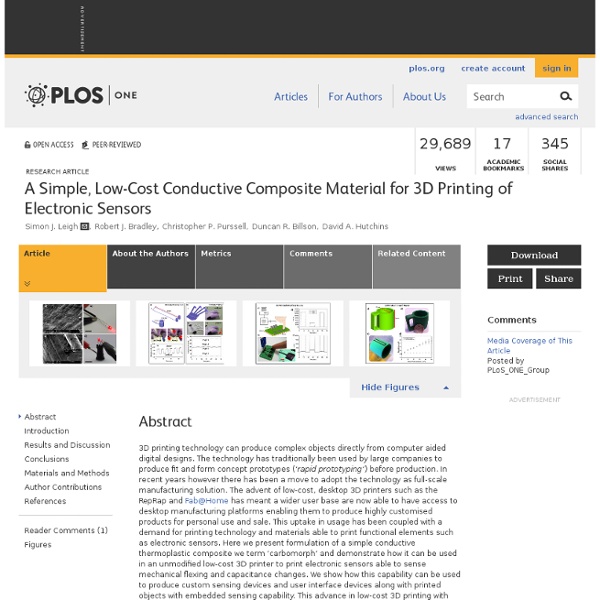Carbomorph: Conductive material for 3D Printing of Electronic Sensors

Printed Optics
Disney Research, Pittsburgh Printed Optics is a new approach to creating custom optical elements for interactive devices using 3D printing. Printed Optics enable sensing, display, and illumination elements to be directly embedded in the body of an interactive device. Printed Optics is part of our long term vision for the production of interactive devices that are 3D printed in their entirety. Research Paper Printed Optics: 3D Printing of Embedded Optical Elements for Interactive Devices Willis, K. Awards Best Demo Award at UIST 2012Best Paper Nominee at UIST 2012 Team and Credits The Printed Optics project has been developed at Disney Research Pittsburgh and Carnegie Mellon University by Karl D.D. Contact Email: drinfo [at] disneyresearch [dot] com Gallery Chess pieces with embedded light pipes display content piped from an interactive tabletop. 3D printed light pipes can create display areas on physical objects, by guiding light from regular screens.
Playing pop music via paper posters with conductive ink
12 March 2012Last updated at 14:00 ET The Listening Post is a paper poster that plays song clips via printed electronics Paper posters that play music via printed circuits made with conductive ink have been unveiled. The prototype "Listening Post" poster is a guide to bands performing locally. The interactive poster plays a short clip of a band's music when a thumbnail image is pressed. The low cost of printing mean anything that uses paper or card could soon be much more interactive, said the poster's inventors. It is one of several "paper apps" that have been developed by a consortium of British scientists, musicians and researchers being demonstrated at the South By Southwest Show in Austin, Texas. Low cost Peter Thomas, head of the Liverpool-based Uniform agency that helped co-ordinate the poster's creation, said it was designed to explore novel methods of interaction. He said it could be a way to get round the modern problem of "infobesity". Smart paper plans
Related:
Related:



